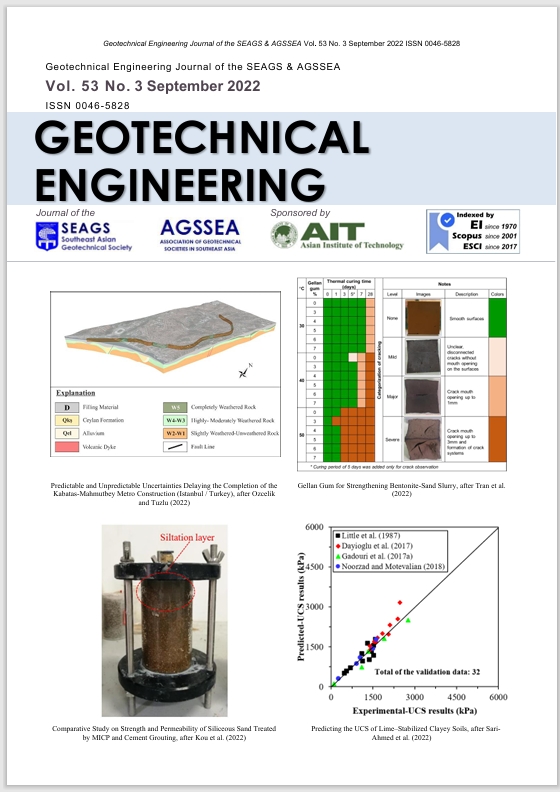Comparative Study on Strength and Permeability of Siliceous Sand Treated by MICP and Cement Grouting
Main Article Content
Abstract
Cement and other chemical materials are widely used as additives in soil improvement. Microbially induced calcite precipitation technology has been used in soil improvement as the advantage of green and environmental protection. In this study, the potential of using microbially induced calcite precipitation (MICP) technology replaces cement for treating siliceous sand is presented. A series of laboratory tests were carried out to assess the unconfined compressive strength (UCS) and permeability of microbial-reinforced sand and cement reinforced sand. The results indicated that, for the experimental siliceous sand with a small particle size (0.63-1.25 mm), the average UCS of the microbial-reinforced sand is significantly higher than that of the cement-reinforced sand under the condition of curing for 7 days, and the quality of cement-reinforced sand is affected by the water-cement ratio. The permeability coefficient of microbial-treated sand is also significantly reduced, which are 0.0007 times and 0.05 times that of pure sand and cement-reinforced (w/c = 2:1), respectively. The porosity reduction of the sample after microbial grouting is up to 13.6%, which is also significantly higher than cement-reinforced. The microstructure study shows that calcite crystals can not only be widely attached to the surface of sand particles, but also better penetrate into the voids between sand particles, formed more effective ways of connection and make more effective bonding. It explains why microbial-reinforced sand has higher unconfined shear strength and lower permeability coefficient than cement-reinforced sand.
Article Details

This work is licensed under a Creative Commons Attribution-NonCommercial-NoDerivatives 4.0 International License.
Copyright © 2019 Association of Geotechnical Societies in Southeast Asia (AGSSEA) - Southeast Asian Geotechnical Society (SEAGS).


